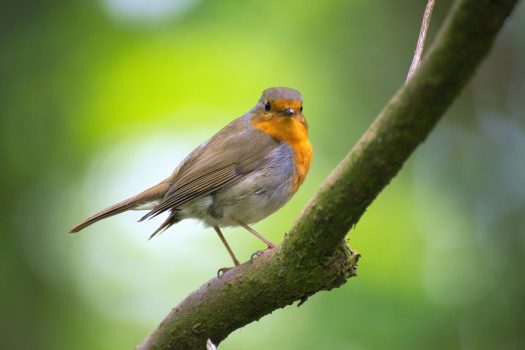This morning Jan asked me, “Where are all the birds?” What she was commenting on was that we are not seeing many birds in our suburban Beaverton backyard, and we’re used to seeing birds. We have a bird feeder with a diverse selection of seeds, a suet ball, a hummingbird feeder, and a bird bath, all rarely used.
I said, “I know why.” Carol Harker and I have just finished reading a book by Douglas Tallamy, Nature’s Best Hope: A New Approach to Conservation That Starts in Your Yard. Dr. Tallamy is a professor of wildlife ecology with a focus on the interaction between plants and wildlife. His research shows that resident birds and insects (including bees and butterflies) feed on locally native plants. The problem is that Jan and I live in a subdivision that is a non-native plant ecosystem (there are only three native plant species in our yard!).
We had lots of birds of many varieties in our previous Beaverton yard. When we lived on Cooper Mountain, there were always birds to be seen: scrub jays, goldfinches, house finches, chickadees, several kinds of sparrows, swallows, and more. When there was an open one-acre lot across the street, we always had bluebirds in our nest boxes (It is well known that bluebirds need about an acre of open land to feed their chicks). After a large new house was built on that lot, the bluebirds moved on, but swallows now use the nest boxes.
There were also hummingbirds, usually both Anna’s and rufous, and they would have two families every year. The fledglings, which I called the “teenagers,” would fight over access to our two hummingbird feeders. The hummingbirds nested in a forest a couple of yards away.
I think that is the difference from our current yard. On Cooper Mountain, we had a very large predominantly native forest (including Jenkin’s Estate) to the north and, to the south, the 800- acre Cooper Mountain Nature Park with its open meadows and oak woodland.
You may know that we spend the winter at our house in San Antonio, Texas. There we have a different, but similarly wide variety of birds: cardinals, blue jays, mockingbirds, three kinds of doves, and many more. We can sit in our breakfast nook and watch them at our feeders and bird bath. Nearly every yard in our suburban neighborhood has a native live oak, and many have native cedar elm, Texas red oak, and mountain cedar. Two blocks away there is a wide native forest around a dry creek bed that forms a long linear park across San Antonio, and two miles away there is a nature park over a square mile in size.
In both our San Antonio neighborhood and on Cooper Mountain, the plantings are mostly non-native, but the resident wildlife has nearby access to a variety of native plants (trees, shrubs, annual and perennial flowering plants, and grasses). Unfortunately, our Beaverton home north of Sunset Highway doesn’t have a concentration of nearby native plants. As a result, our yard receives few bird visitors.
Now that we understand some of the reasons there are few birds, next week I will discuss how all of us can make a difference.
- Eric Luttrell, Community Carbon Team Member at St. Andrew Lutheran Church
To sign up to receive these blog post directly to your email account, click here or on the link in the upper right sidebar of any page at ecofaithrecovery.org. You can also learn how to engage in our Community Carbon initiative here.
Please feel free to share this post with others and use the field below to post your thoughts on this topic. Thanks!

